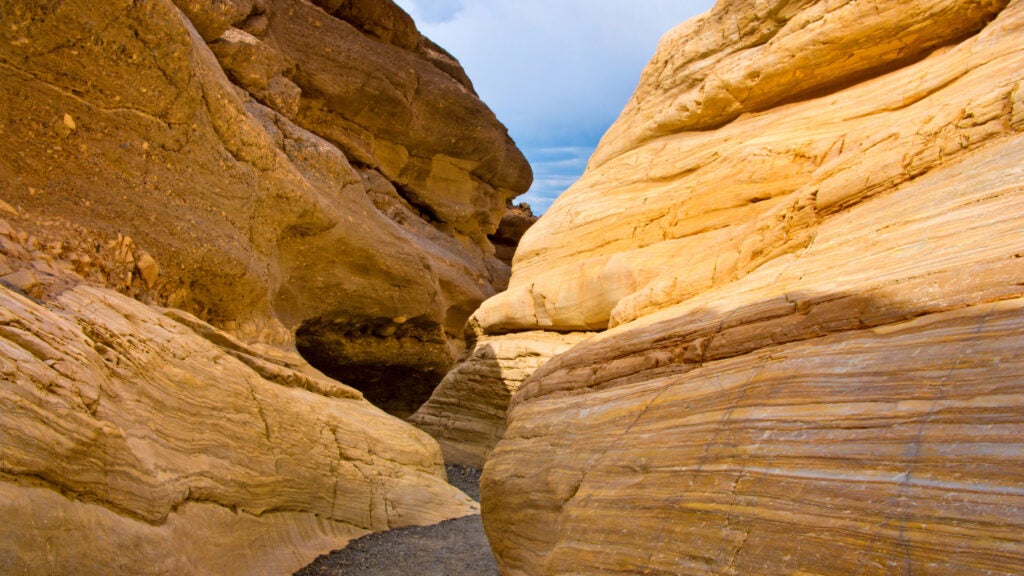No products in the cart.
Outdoor Adventure
A Fatal Accident in Death Valley Prompts Officials to Warn Solo Adventurers
Outside’s long reads email newsletter features our strongest writing, most ambitious reporting, and award-winning storytelling about the outdoors.
Earlier this month, an unidentified 54-year-old-man died in an apparent fall in Death Valley National Park. Leading up to the discovery, a campground host first noticed a tent that remained standing past its due date. Rangers left a note in the tent, attempting to contact the tent user. A day after failing to connect with the visitor, officials returned to remove the property from the site and found technical gear within the tent.
After the discovery, the rangers recalled seeing a vehicle at the Mosaic Canyon trailhead a few days earlier. Officials returned to the trailhead, and ran the plates on the vehicle. The plates matched the campsite registration information, prompting a rescue attempt.
The National Park Service, Inyo County SAR, and the Inyo County Sheriff’s Office teamed up to search for the missing man. Eventually, they located his body within the west fork of the Mosaic Canyon canyon.
At the time of the extraction, rangers and SAR members noticed that the man’s rope was too short for his rappel. A spokesperson, Abby Wines, told Climbing, “The rope was not long enough for the doubled ends to reach the ground. What he did when he was part way down the rappel was he had webbing in his pack and he tied it to the ends of the rope to make a loop. So it’s still double strands but there were two knots to pass. It appears that in passing that knot, that’s when he fell.” Officials estimate that he fell about 30 feet.
Wines added:“It’s really rare for single canyoneers to come to Death Valley. And it’s not a good idea. Having another couple people with him probably would’ve prevented this. [A group] probably would’ve had more than one rope.”
While the death was canyoneering related, rappelling off the end of the rope is one of climbing’s constant killers. In the Death Valley accident, the rope ends were knotted, but the rappeller had to unclip from the rappel to pass the knots to get to the tied-on slings. Adding slings to lengthen a rappel rope is a tactic that can be used with success, but the rappeller has to stay attached to the rope—tying a prussik around both rope strands might have worked, but it’s impossible to know whether the victim had a sling suitable for a prussik. Alternately, if he had had prussik material and enough slings to fashion a foot look, he might have been able to prussik up the rappel rope and find an alternate route.
The Death Valley accident wasn’t the only recent incident of its kind. Last year, at least four canyoneering deaths took place in the United States. Brandon Levander died while rappelling in Arizona’s Sierra Canyon after the rock anchor blew, which resulted in a 25-foot head-first fall. Andrew Arvig rappelled past an anchor in Utah’s Heaps Canyon and was unable to ascend back to the anchor. Cassy Brown lost her life to a fall after her rope got stuck in Utah’s Mystery Canyon. Evidence suggested that she attempted to ascend the stuck rope, which came undone. And in January of last year, Justin Ibershoff lost his life in Death Valley’s Deimos Canyon after being struck by a canyon slide.
In a news release, Wines stated: “We recommend that anyone going into the backcountry lets someone know their plans. The park doesn’t track the 1.7 million people that visit each year.” She added: “This man was not reported overdue, and the search did not start in time to save his life. A satellite communication device also could have been a lifesaver.”
The official cause of death of the man has not yet been determined, but will be evaluated by the Inyo County Coroner’s Office.
Source link

